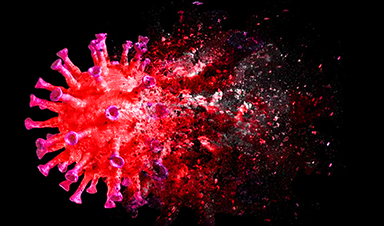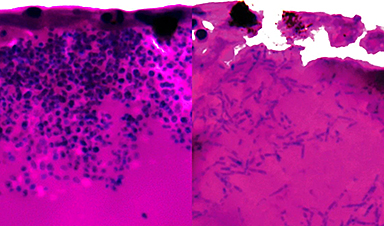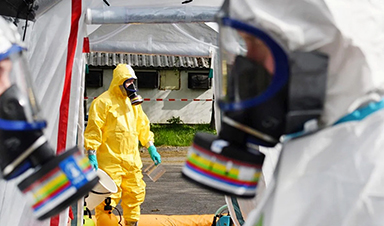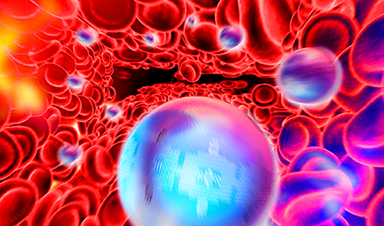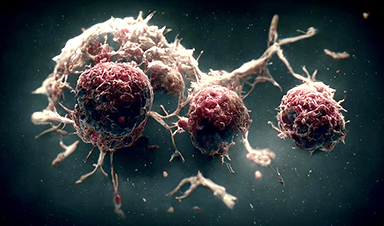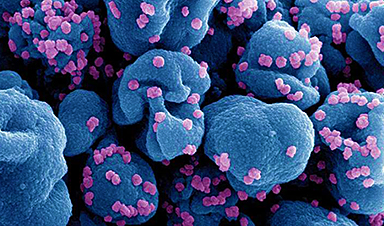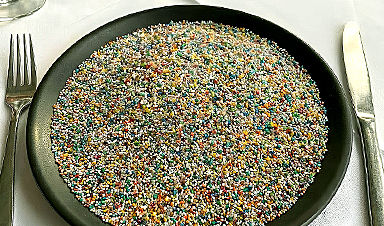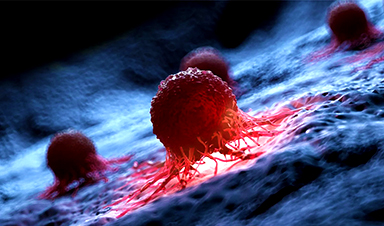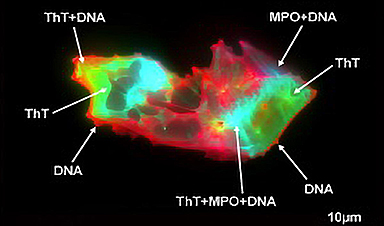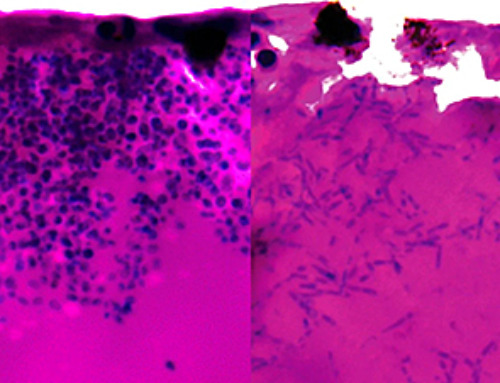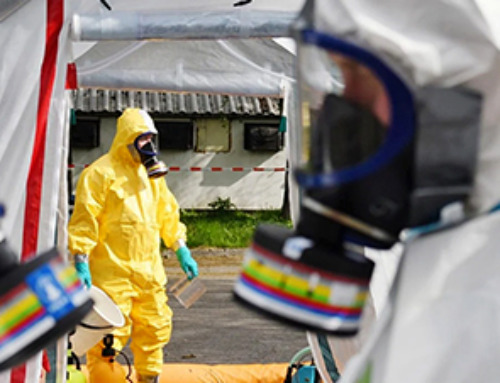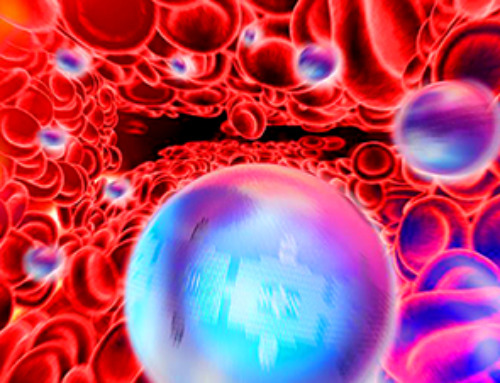New research identifies the immune molecule STING as a driver of brain damage in Alzheimer's.
A new approach to Alzheimer's disease has led to an exciting discovery that could help stop the devastating cognitive decline linked to Alzheimer's and other neurodegenerative disorders.
Scientists at the University of Virginia School of Medicine have been exploring the idea that Alzheimer's may be driven, at least in part, by the immune system's misguided efforts to repair DNA damage in the brain. Their research has uncovered that an immune molecule called STING plays a central role in triggering the buildup of harmful plaques and tangled proteins that are closely tied to the disease. Blocking this molecule protected lab mice from memory loss and cognitive problems, according to the researchers.
STING is a key player in the brain's immune defense, but it may also contribute to other serious conditions like Parkinson's disease, amyotrophic lateral sclerosis (ALS or Lou Gehrig's disease), and dementia. By learning how to control STING's activity, scientists believe they could open the door to new treatments with the potential to improve the lives of millions facing these challenging diagnoses.
"Our findings demonstrate that the DNA damage that naturally accumulates during aging triggers STING-mediated brain inflammation and neuronal damage in Alzheimer's disease," said researcher John Lukens, PhD, director of UVA's Harrison Family Translational Research Center in Alzheimer's and Neurodegenerative Diseases. "These results help to explain why aging is associated with increased Alzheimer's risk and uncover a novel pathway to target in the treatment of neurodegenerative diseases."
Alarming Trends in Alzheimer's
Alzheimer's is a growing problem across the country and around the world: More than 7 million Americans are already living with the condition, and that number could top 13 million by 2050. That has researchers working frantically to find ways to better understand and treat the condition.
The causes of Alzheimer's remain murky, but scientists are increasingly coming to appreciate the role of the immune system in the disease's development. STING is part of that immune response; the molecule helps direct the clearance of viruses and stressed cells harboring DNA damage.

While STING is an important defender of the brain, it can also become hyperactive and cause harmful inflammation and tissue damage. That had Lukens and his team eager to determine what part it could be playing in Alzheimer's. Blocking the molecule's activity in lab mice, they found, helped prevent Alzheimer's plaque formation, altered the activity of immune cells called microglia, and redirected the workings of important genes, among other effects.
"We found that removing STING dampened microglial activation around amyloid plaques, protected nearby neurons from damage, and improved memory function in Alzheimer's model mice," said researcher Jessica Thanos, part of UVA's Department of Neuroscience and Center for Brain Immunology and Glia (BIG Center). "Together, these findings suggest that STING drives detrimental immune responses in the brain that exacerbate neuronal damage and contribute to cognitive decline in Alzheimer's disease."
Promising Treatment Target
While scientists have been investigating other molecules thought to be important in Alzheimer's, STING makes for a particularly attractive target for developing new treatments, the UVA Health researchers say. That's because blocking STING appears to slow both the buildup of amyloid plaques and the development of tau tangles, the two leading candidates for the cause of Alzheimer's. Other molecules lack that robust involvement, and, further, could be targeted only at very specific – and very limited – stages in the disease's progression.
"We are only beginning to understand the complex role of innate immune activation in the brain, and this is especially true in both normal and pathological aging," Thanos said. "If we can pinpoint which cells and signals sustain that activation, we will be in a much better position to intervene effectively in disease."
While Lukens' pioneering research has opened new doors in the fight against Alzheimer's, much more work will need to be done to translate the findings into treatments. For example, scientists will need to better understand STING's roles in the body – such as in the immune system's response to cancer – to ensure any new treatment doesn't cause unwanted side effects.
But those are the types of big questions that Lukens and his collaborators at the Harrison Family Translational Research Center are eager to tackle as part of their efforts to fast-track new treatments and, eventually, they hope, cures. (The center is part of UVA's Paul and Diane Manning Institute of Biotechnology, now under construction at Fontaine Research Park.)
"Our hope is that this work moves us closer to finding safer and more effective ways to protect the aging brain, as there is an urgent need for treatments that can slow or prevent neuronal damage in Alzheimer's," Lukens said. "Shedding light on how STING contributes to that damage may help us target similar molecules and ultimately develop effective disease-modifying treatments."
Reference: "STING deletion protects against amyloid β–induced Alzheimer's disease pathogenesis" by Jessica M. Thanos, Olivia C. Campbell, Maureen N. Cowan, Katherine R. Bruch, Katelyn A. Moore, Hannah E. Ennerfelt, Nick R. Natale, Aman Mangalmurti, Nagaraj Kerur and John R. Lukens, 23 May 2025, Alzheimer's & Dementia.
DOI: 10.1002/alz.70305
The study was supported by the National Institutes of Health's National Institute of Aging, grants R01AG071996, R01AG087406, and RF1AG078684; the Alzheimer's Association, grant ADSF-21-816651; the Cure Alzheimer's Fund; The Owens Family Foundation; and The Harrison Family Foundation.
News
AI Helped Scientists Stop a Virus With One Tiny Change
Using AI, researchers identified one tiny molecular interaction that viruses need to infect cells. Disrupting it stopped the virus before infection could begin. Washington State University scientists have uncovered a method to interfere with a key [...]
Deadly Hospital Fungus May Finally Have a Weakness
A deadly, drug-resistant hospital fungus may finally have a weakness—and scientists think they’ve found it. Researchers have identified a genetic process that could open the door to new treatments for a dangerous fungal infection [...]
Fever-Proof Bird Flu Variant Could Fuel the Next Pandemic
Bird flu viruses present a significant risk to humans because they can continue replicating at temperatures higher than a typical fever. Fever is one of the body’s main tools for slowing or stopping viral [...]
What could the future of nanoscience look like?
Society has a lot to thank for nanoscience. From improved health monitoring to reducing the size of electronics, scientists’ ability to delve deeper and better understand chemistry at the nanoscale has opened up numerous [...]
Scientists Melt Cancer’s Hidden “Power Hubs” and Stop Tumor Growth
Researchers discovered that in a rare kidney cancer, RNA builds droplet-like hubs that act as growth control centers inside tumor cells. By engineering a molecular switch to dissolve these hubs, they were able to halt cancer [...]
Platelet-inspired nanoparticles could improve treatment of inflammatory diseases
Scientists have developed platelet-inspired nanoparticles that deliver anti-inflammatory drugs directly to brain-computer interface implants, doubling their effectiveness. Scientists have found a way to improve the performance of brain-computer interface (BCI) electrodes by delivering anti-inflammatory drugs directly [...]
After 150 years, a new chapter in cancer therapy is finally beginning
For decades, researchers have been looking for ways to destroy cancer cells in a targeted manner without further weakening the body. But for many patients whose immune system is severely impaired by chemotherapy or radiation, [...]
Older chemical libraries show promise for fighting resistant strains of COVID-19 virus
SARS‑CoV‑2, the virus that causes COVID-19, continues to mutate, with some newer strains becoming less responsive to current antiviral treatments like Paxlovid. Now, University of California San Diego scientists and an international team of [...]
Lower doses of immunotherapy for skin cancer give better results, study suggests
According to a new study, lower doses of approved immunotherapy for malignant melanoma can give better results against tumors, while reducing side effects. This is reported by researchers at Karolinska Institutet in the Journal of the National [...]
Researchers highlight five pathways through which microplastics can harm the brain
Microplastics could be fueling neurodegenerative diseases like Alzheimer's and Parkinson's, with a new study highlighting five ways microplastics can trigger inflammation and damage in the brain. More than 57 million people live with dementia, [...]
Tiny Metal Nanodots Obliterate Cancer Cells While Largely Sparing Healthy Tissue
Scientists have developed tiny metal-oxide particles that push cancer cells past their stress limits while sparing healthy tissue. An international team led by RMIT University has developed tiny particles called nanodots, crafted from a metallic compound, [...]
Gold Nanoclusters Could Supercharge Quantum Computers
Researchers found that gold “super atoms” can behave like the atoms in top-tier quantum systems—only far easier to scale. These tiny clusters can be customized at the molecular level, offering a powerful, tunable foundation [...]
A single shot of HPV vaccine may be enough to fight cervical cancer, study finds
WASHINGTON -- A single HPV vaccination appears just as effective as two doses at preventing the viral infection that causes cervical cancer, researchers reported Wednesday. HPV, or human papillomavirus, is very common and spread [...]
New technique overcomes technological barrier in 3D brain imaging
Scientists at the Swiss Light Source SLS have succeeded in mapping a piece of brain tissue in 3D at unprecedented resolution using X-rays, non-destructively. The breakthrough overcomes a long-standing technological barrier that had limited [...]
Scientists Uncover Hidden Blood Pattern in Long COVID
Researchers found persistent microclot and NET structures in Long COVID blood that may explain long-lasting symptoms. Researchers examining Long COVID have identified a structural connection between circulating microclots and neutrophil extracellular traps (NETs). The [...]
This Cellular Trick Helps Cancer Spread, but Could Also Stop It
Groups of normal cbiells can sense far into their surroundings, helping explain cancer cell migration. Understanding this ability could lead to new ways to limit tumor spread. The tale of the princess and the [...]

